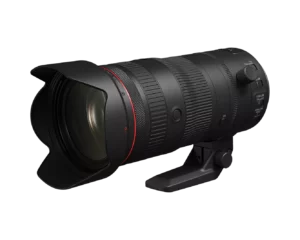Creating a film budget involves estimating the costs associated with producing a movie, from pre-production to post-production. A well-planned budget is crucial for securing funding, tracking expenses, and ensuring your project stays on track. Here are the steps to create a film budget:
- Read the script thoroughly: Familiarize yourself with the story, characters, locations, and requirements. This understanding will help you make more accurate cost estimates.
- Break down the script: Identify all the elements required for each scene, such as actors, locations, props, wardrobe, special effects, and stunts. Organize this information in a breakdown sheet.
- Create a shooting schedule: Estimate the number of shooting days required for each scene and location. Take into account factors like cast availability, weather, and daylight hours.
- Determine staffing needs: List all the crew members needed for each department (e.g., direction, production, camera, sound, art, costume, makeup, etc.) and their respective salaries or day rates.
- Estimate equipment costs: Research rental or purchase costs for cameras, lenses, lighting, sound gear, and other necessary equipment.
- Account for location expenses: Include fees for location permits, scouting, set construction, and location rentals, as well as transportation and accommodations for cast and crew if necessary.
- Calculate cast costs: Estimate costs for hiring actors, including their fees, travel, and accommodations. Don’t forget to factor in agency commissions and taxes.
- Factor in post-production costs: Budget for editing, sound design, music licensing, visual effects, color grading, and other post-production expenses.
- Include insurance and contingency: Secure insurance coverage for potential accidents, equipment damage, or other unforeseen circumstances. Set aside a contingency fund (usually 10% of the total budget) to cover unexpected costs.
- Add marketing and distribution expenses: Allocate funds for marketing materials, film festival submissions, and distribution efforts.
- Organize the budget: Compile all the estimates into a comprehensive budget document, typically using budgeting software or a spreadsheet. Break it down into categories such as pre-production, production, post-production, and marketing.
- Review and adjust: Analyze your budget for any inconsistencies or areas where you can reduce costs. Make adjustments as necessary to ensure the budget is realistic and achievable.
Remember that creating a film budget is an iterative process, and you may need to revise your estimates as you gather more information or encounter changes during production.
Recommended Film Budgeting Software for Students and Independent Filmmakers
- Gorilla Budgeting: Gorilla Budgeting is part of the Jungle Software suite, which also includes Gorilla Scheduling and Koala Call Sheets. Jungle Software was founded in 2002 with the goal of providing user-friendly and affordable software solutions for independent filmmakers. Over the years, Gorilla has gained popularity among indie filmmakers and smaller production companies. Gorilla Budgeting: https://www.junglesoftware.com/
- Celtx: Celtx was founded in 2000 by Mark Kennedy as an open-source scriptwriting software. It has since evolved into an all-in-one pre-production suite offering various tools, including budgeting, scheduling, and storyboarding. Celtx transitioned to a cloud-based platform in 2012, which made it easier for teams to collaborate on projects in real-time. Celtx: https://www.celtx.com/
- StudioBinder: StudioBinder was founded in 2014 by Robert Kiraz and Avik Mardikian with the goal of creating a modern, intuitive, and collaborative platform for filmmakers. The software has gained popularity due to its ease of use and comprehensive set of pre-production tools, including budgeting, scheduling, and call sheet management. StudioBinder: https://www.studiobinder.com/
These software applications have evolved over the years to cater to the changing needs of the film industry, incorporating new features and functionality to help filmmakers create accurate and comprehensive budgets more efficiently.
I hope these budgeting guidance tip help. Let us know your thoughts.
Kim



